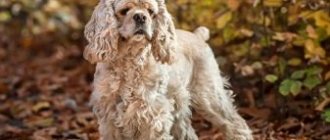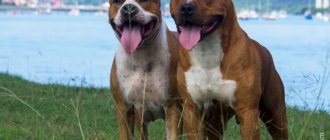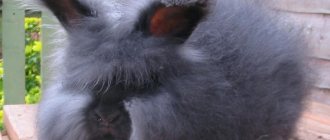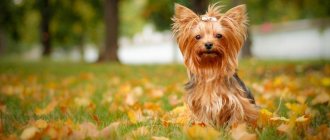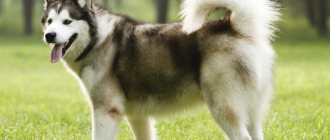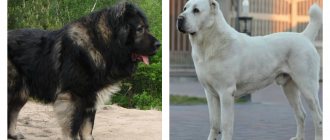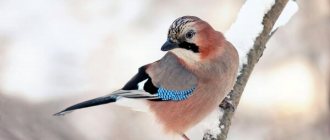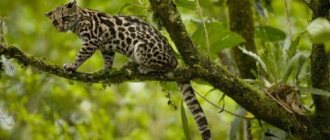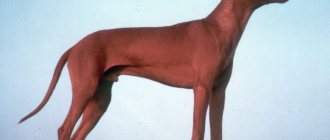- November 19, 2018
- Hunting
- Elena Motrenko
The duck is the most numerous bird in Russia. These birds prefer to live in fresh water bodies and slightly salty seas. All wild ducks are divided into two types: river and diving, which are also divided into many breeds.
These birds have always been one of the most favorite objects of hunting, as their meat is tasty and nutritious, and finding them is not difficult. Ducks are also valued for their soft down.
Appearance
Wild ducks are closely associated with water, as evidenced by their habits, lifestyle and structure. The wings of this bird are suitable only for short flights; they are not wide and rather short. This shape of the wings is optimal for diving, as is the structure of the paws, the front three fingers of which are connected by swimming membranes.
The duck family is not particularly large in size; the average weight of an adult is from 500 to 2000 grams.
In most species, sexual dimorphism in plumage is pronounced, which is most noticeable during the pairing period - in winter and spring. After molting, males are more similar to females. In drakes and single females, molting is very intense - the bird even loses the ability to fly for some time, simultaneously losing its flight and tail feathers. In females with a brood, molting is much slower and does not deprive them of the ability to fly, but begins only after the ducklings fledge.
What other options are there?
The types of ducks are so diverse that you can look at them endlessly. Here are the names of several well-known breeds.
Gogol
Gogols are medium-sized ducks and drakes with a short neck and a massive, almost triangular head. Males are decorated with bright plumage with black tints. A characteristic and outstanding feature of gogol is not only the presence of a memorable name, but also a loud, peculiar sound, similar to a squeak.
turn black
Ducks are diving ducks. They are distinguished by a short neck with a massive head and amazing plumage. The neck area of the black duck is decorated with a stripe similar to a collar; this is always clearly visible in the photo. The bird's tail is lowered, and its weight does not exceed 1 kg. Duck is found in Russia in five different varieties. Thus, in the northern part of the country marine species predominate.
Hunting for this bird occurs much more often, because it is considered an enviable trophy.
Diving ducks
Mergansers and Ogari
Mergansers and Ogari are ducks of impressive size and listed in the Red Book. The former are characterized by bright and richly colored feathers. The male's head is predominantly green, and his chest is white. The female is always lighter, with obvious orange tints.
Ogars are similar in appearance to geese and have high limbs. Ducks of the species are famous for their chocolate plumage. The wigeon is considered a large species of bird, the weight of which can exceed 1 kg. The bird has bright and memorable plumage, a chestnut head, a red chest and a grayish tail. The back is decorated with ornaments. Females with red hair, monotony.
Pintail
The name is associated with the awl-shaped feathers on the tail of birds. The feathers are often chestnut and gray with black and white markings. Birds are distinguished by the presence of a long tail, an elongated neck and sharp wings. Shelducks have a unique and inimitable coloration. The dominant color is white, although the head is black and the chest is rufous. The belly is complemented by black stripes. Limbs pink. The weight of the female reaches 1300 g, and the drake - 1500 g.
We invite you to familiarize yourself with: York chocolate cat - photo, description and characteristics of the chocolate York breed
Nutrition
The diet of this bird consists of aquatic plants, fish, insects, small aquatic animals - crustaceans and mollusks, which it obtains from the water and from the bottom of reservoirs. What do wild ducks eat in winter and early spring, when there is ice and it is difficult to get food from the water? At this time, ducks feed on the stems and seeds of coastal plants. In the warm season, fruits and berries from shrubs and trees growing near ponds are added to the menu.
Ducks can be called orderlies of reservoirs. Due to the fact that birds eat mosquito larvae in large quantities, this significantly reduces the reproduction of insects.
Wild duck food
The ducks' lifestyle involves a constant search for food. In the wild, ducks of common river breeds eat mainly plant foods. If you manage to catch a live duck for breeding, its menu can be enriched with animal food. Many ducks and dabbling ducks happily consume worms, insects, and plankton.
Ducks often feed on grass, dug up roots, and aquatic plants. Greens in the diet are important for the birds’ bodies; they prevent the development of gastrointestinal diseases. At the bottom of a reservoir, many birds easily find mollusks and crustaceans. Mergansers are attracted to small-sized marine fish. Many ducks inhale water, straining and retaining food.
Reproduction
Wild ducks begin laying eggs in the spring, from April to May. The female brings one egg per day, after 8-12 eggs are collected, the female sits on the nest and waits for the ducklings to appear. Incubation lasts on average 25-30 days, ducklings hatch almost simultaneously.
Basically, all species of wild ducks nest alone, making their nests on the ground. Only mandarin ducks, mergansers and goldeneyes nest in tree hollows, shelducks fly in burrows, and sardines bury their eggs in the ground. During the nesting period, the northern common eider duck lives in colonies of up to one hundred individuals.
Almost all types of ducks can lay eggs in other people’s nests and, often, females hatch both their own and other people’s eggs. Females take care of the offspring, and only among the Shelduck and Shelduck do males help care for the chicks.
Common goldeneye
There is another species of black duck, similar in appearance to the Lysukha - the Gogol duck. This black white-breasted duck is often found both on the Eurasian continent and America. She is a prominent representative of the duck family and reaches a length of 50 cm and a weight of 0.5-1.1 kg.
Gogol's habitat is forested areas, typical nesting places are hollows of trees growing along the banks of reservoirs. Lays from 5 to 13 eggs. Wintering is carried out on the banks of fresh water reservoirs.
Externally, Gogol is a strongly built duck, 42-50 cm long, weighing from 0.5 to 1.2 kg.
The black duck feeds on small fish, worms, dragonflies, and midges.
Attention! Gogol, unlike the Coot, has a black beak and a triangle-shaped head, a white chest, belly and sides, and a white stripe on both wings. Knowing the differences in color between black duck varieties will help avoid confusion between the two species.
Gogol's beak is black, short, widened upward, and the tip is pointed. The color of the iris is yellow, the wings are black-brown. The goldeneye's legs are orange in color and have dark webbed feet that extend all the way to the hind toe.
Duck nogol
The appearance of the female is not so striking, unlike the male; her color is dominated by muted gray-brown shades. The head is dark brownish in color with a white border around the neck. The iris of the eyes is light yellow or white. The top of the body is covered with gray feathers, the belly is white. The wings are dark slate, with a white stripe on each. Its legs are as bright as a male’s, yellow in color.
We invite you to read: How to hatch ducklings in an incubator at home: instructions, photos and videos of hatching duck eggs
Mating ceremonies are accompanied by high-pitched sounds from the male, reminiscent of the human words "surprizzzzzzzzzzzzzzzzzzzzzzzzzzzzzzzzzzzzzzzzzzzzzzzzzzzzzzzzzzzzzzzzzzzzzzzzzzzzzkistan" by the female fish and dogs, "berrrrrrrrrrrrrrrrrrr" sounds from the female birds. Mating games are accompanied by whistling and flapping of wings, like all ducks.
On a note! Gogol is a migratory bird; it winters on the warm coasts of Greece, the Black Sea, and the Gulf of Mexico.
Sexual maturity of the goldeneye occurs at the age of two; black ducks form pairs in winter. They make nests in hollows of aspen, birch, and pine trees at a height of 10-15 m. They can also nest in burrows of hares and hollows of old logs. The female is both a hen and a laying hen, although there are cases when two females lay eggs in one nest.
Such eggs remain unhatched. And usually the female lays eggs in quantities from 8 to 13, and begins to incubate them after laying the last egg for 29 days. Black and white ducklings are born, spend the first day in the nest, by the age of two weeks they already swim well in the lake and are able to get their own food. Ducklings acquire the ability to fly after two months.
In winter, Gogol's menu consists of invertebrate animals on the bottom of the reservoir and on algae, as well as mollusks and crustaceans, in summer - usually midges, bloodworms, dragonflies, worms, roots, edible parts of algae, etc.
Gogol is a wild duck; breeding such a bird at home is impossible. The value of poultry for obtaining large quantities of meat or eggs is very small.
Habitats
The duck family chooses to live in places near bodies of water. Ideal locations are wetlands, streams, bays, lakes and rivers rich in coastal vegetation. This bird does not settle in places where there is nowhere to hide. This bird cannot be found on fast rivers and reservoirs with bare banks.
Wild ducks quickly get used to people and willingly settle near city water bodies. They make contact with people and accept treats with pleasure.
Mallard
You should know the name of a duck with a green head - it is a common representative of the duck order Anseriformes - the Mallard. This is a well-known representative of the duck family, which became the progenitor of many breeds of domestic ducks.
Mallard Duck
The mallard has a large, dense body 57-62 cm long, weight 1000-2000 g. The male has a bright green head and neck, the chest and crop are brown-brown, the back and belly are spotted gray. The female mallard has darker plumage, a gray-brown belly with variegated longitudinal feathers.
It is important to know! During molting, the male loses his elegant plumage, becoming similar to the female, acquiring a black-brown color.
The Mallard's beak is quite wide, flattened at the edges. The beak color of representatives of this breed varies: from light olive, gray to orange.
The mallard does not always fly to warmer regions for the winter; if the bird finds an ice-free body of water, it will overwinter there.
The female Mallard's voice is the well-known quack, while the male produces hissing sounds. Courtship periods are accompanied by a loud whistle from the male.
The mallard occupies forest and forest-steppe zones, less often lives in mountains and desert areas. Occupies the coastal areas of reservoirs with fresh, semi-saline and salt water, does not like open areas and fast currents. During nesting periods, it settles in reeds or other thickets, wooded river openings, and is not at all afraid of humans.
Flights
Ducks are migratory birds, migrating after food. With the onset of cold weather, it becomes more and more difficult to obtain food and birds, in search of food, leave their homes and begin migration, heading south. In the spring, the flocks go home. It is worth noting that ducks living at the equator and in southern latitudes also migrate to escape drought and heat.
Flights begin after the young animals have taken wing, become stronger and are ready for long flights. At the moment of migration, the flock moves behind the leader, in a clear order. Migration routes pass through places rich in food.
Coot
The Black Duck, or Coot, is a small bird that lives in water, originating from rails.
It has a bright, well-recognized appearance: black color, white beak and white leathery patch on the forehead. In addition to its recognized name, it also has other territorial nicknames: kashkaldak and kachkaldak. There is a variety of Coot that lives exclusively in Morocco and Spain - the crested one, which has two red balls above the upper plaque of leathery origin.
Oda feeds exclusively on herbaceous plants: hornwort, algae, etc.
Note! Despite its belonging to the rail ducks, the Coot, like dabbling ducks, spends almost all its time in the water.
The coot is usually the size of an average duck. The length of the bird varies from 36 cm to 38. Weight depends on age and reaches 0.5-1 kg, males can gain weight up to 1.5 kg.
The black duck with a white beak usually has a strong build, its body is flattened on the sides. The back, head and neck of the Coot are covered with black and dark gray plumage. The breast and belly of the duck are light gray in color, the beak is white, small in size, pointed and narrowed on the sides. From afar, the red iris catches the eye. The tail of a black duck is not long.
Object of hunting
In Russia and the CIS there are various species of ducks (about forty). About thirty species are widespread; these breeds of wild ducks are the object of commercial and sport hunting.
Birds of the duck family are prey for hunters not only for their meat. The common eider sea duck, for example, is prized for its down. Eggs of shelducks and goldeneyes are collected in some regions, and the colorful mandarin duck is bred for decorative purposes.
General features and habits of wild ducks
All breeds of wild ducks live near water, spend most of their time in the pond, and eat the same food in nature. Therefore, the body structure and behavioral characteristics of birds are similar. The size of the wings helps them carry out long flights. There are webbed feet for comfortable swimming, maneuvering in the water, and diving to the surface.
Male and female ducks often look different: the color of their plumage varies, especially in autumn and spring, the period when the animals breed. But when molting, birds of both sexes are similar to each other, because feathers fall out abundantly, and the mating season is already over. Sometimes ducks cannot even fly due to the loss of flight and tail feathers. Females raising ducklings moult somewhat more slowly.
River species
The river variety of ducks is distinguished by its high position in the water and its tail raised above the water. In search of food, they do not dive, but only submerge halfway in the water, leaving their tail above the surface of the water. They take off almost vertically, without a run-up. In flight, the difference from diving is especially noticeable due to the longer neck, tail and wings. They rarely stay in pack formation.
Shoveler
It is distinguished by an expanded spade-shaped beak. It flies somewhat awkwardly and slowly, slightly tilting its head down. Drakes are very beautiful: against the background of a white chest, a dark green head and neck stand out, and the sides and belly are red. Blue wings in front and a bright green “mirror”. Females are reddish-brown. The birds' feet are bright orange. They are considered the most carefree of river species.
Mallard
The wild mallard duck is familiar to all hunters; it is the largest river species. In spring, the drake has an emerald green head, white collar, brown chest and gray body. The male is lighter than the female. The mallard's legs are orange and its beak is yellow. Males have a longer neck and hold their heads high.
Black mallard
Habitat: the south of the Far East and Siberia. They are no different in size from the common mallard. Its peculiarity is that drakes do not differ from females, since they do not have mating colors. They are distinguished by black beaks with yellow spots on the top. In flight, white spots on the wings are clearly visible.
Pintail
Quite a large duck, males larger than females, with a long neck and an awl-like tail, which is why the bird got its name. The back and head are brown. The rest of the neck, crop and underparts are bright white. The female is gray.
Teal-whistle
The teal duck is the smallest among river ducks. The male has a brownish-red head with a wide green stripe from the eyes to the back of the head. The female is gray. At dusk, the male can be distinguished by a white stripe on the shoulder and a whitish section of the tail between the end of the tail and the abdomen.
Teal
This species lives in the forest belt. Both the drake and the female have large “mirrors” of green color, more pronounced in males. In summer, the male differs from the female by the gray-blue tops of his wings and shoulders.
Marbled or narrow-nosed teal
Habitat: Central Asia and the coast of the Caspian Sea. Average weight 500 gr. The plumage is gray-brown, lighter on the abdomen, the same in females and males. The beak is gray, the legs are brownish-brown. The male is distinguished by a small tuft on the back of his head and light spots around the eyes. They often sit on the branches of bushes and trees growing near water, unlike other types of teal.
Gray duck
The bird is larger than teal, grayish in color. The male differs from the female in having bluish wings and lighter plumage. The male's mating plumage: reddish head, white stripe from the eyes to the back of the head. The female has a rather long beak with a white spot on the side. In the dark, a drake can be distinguished from a female by frequently raising its head along with a cracking sound.
Wigeon
The bird is medium in size, distinguished by its bright white belly and short beak. The drake's head is reddish, its forehead is yellowish-golden, and its chest is chestnut-red. The female wigeon is very similar to the gray duck, differing from it in the dark brown “mirrors” on the wings.
The drake makes sharp sounds similar to a whistle, and the female’s voice is similar to a croak.
killer whale
Habitat: Far East, Eastern Siberia and Kamchatka. Average weight – 800 gr. The killer whale has a black beak and gray legs with dark membranes. The female is similar to a mallard duck, differing in the color of her legs and beak. The male retains bright “mirrors” on his wings even in summer. The voice is somewhat reminiscent of the whistling of a curlew.
Description of the Shoveler Duck
The name of the breed speaks for itself. The Shoveler duck has a beak that widens at the base. From the outside she looks like a mallard. Let's look at what a shoveler duck looks like.
The drake has very bright plumage. Its neck and head are black-green with a shiny tint, there are bright white stripes on the sides, and brown wings. The beak is black.
The female is brown with an olive beak. In summer, male and female individuals are similar to each other, but the drake’s wings are bright blue. The Shovell rarely makes sounds; it can only vocalize when worried.
Shoveler is a migratory bird. Prefers steppe terrain and spacious reservoirs rich in plant food.
The bird begins to breed at the age of two years. They nest in pairs, with females laying up to thirteen eggs. Lonely drakes pursue strange females during the mating season. A few hours after birth, the chicks become quite independent and can run after their mother.
The Shoveler is one of the most carnivorous dabbling ducks. It feeds on small crustaceans, mollusks and insects, as well as their larvae. Shovel ducks often form groups to get food.
Mergansers
The merganser duck differs from other species in having a narrow beak ending in a claw curved towards the bottom. Along the edges of the beak there are pointed horny teeth.
Great merganser
This species lives in the forest zone. Weight reaches two kilograms. The head has elongated feathers, forming a wide double crest in the female. The “mirrors” are white, the beak is red, the legs are orange. In summer, the male can be distinguished by the white feathers on his wings. When a flying bird flaps its wings, it makes a sound similar to a whistle.
Medium merganser
For habitat it chooses the northern parts of the forest zone. Weighs about a kilogram. The beak is red, the legs are reddish-orange. There is a developed double crest on the back of the head. In summer, males have a dark back.
Scaly-sided merganser
A rare species found only in the south of the Far East. Externally similar to the average merganser. It is distinguished by its smaller size, gray beak and wide crest, more developed in females. In summer, the male has white spots on the back of his head.
Pink-eared duck (lat. Malacorhynchus membranaceus)
source
This unusual duck species is named for the pink spot on the side of its head, but the pink-eared duck's main distinguishing feature is actually its beak. The large, flat, square bill and its special structure are used to filter microscopic plants and animals in the water, which make up the majority of the species' diet.
Divers
The subfamily of ducks has a category - the diving duck. They got their name from their method of obtaining food - by diving. This northern duck lives in the Northern Hemisphere, with the largest population in North America. Diving ducks are divided into several types: marbled teals, pochards, ducks and pink-headed ducks. All species, except teals, have colorful, bright plumage and look impressive against the background of the landscape.
Marbled teal
The average weight of an adult is 600 g. The female and male are equally colored. The plumage is grayish-brown with light spots. When a bird is on the water, its tail is raised. Marbled teals dive quite deeply and sometimes perch on trees. For living, they choose ponds with reeds and shrubs along the banks. Habitat: Russia, India, Asia, Spain.
Dives
The diving duck is medium in size, has a short neck and a large head. It sits low on the water and feeds mainly by diving. Pochard duck is small in size, average weight – 900 g. The female looks like a gray duck, the male has a bright head and a light breast. Males are larger than females and more brightly colored. The red-eyed diving duck, the red-billed duck and the pampas duck stand out.
Habitat: temperate climate zone, mainly taiga and forest-steppe of Russia.
Cherneti
Ducks resemble ducks in appearance, this can be seen in the names of some species. Stocky birds of small size with a large head on a short neck. The beak of the duck is gray or black, the legs with leathery membranes are dark gray. All subspecies have a light stripe on their wings. Ducks rarely come to land; they spend most of their time on the water. When diving, they can submerge half or completely.
There are five species found in Russia: the duck, the crested duck, the red-headed duck, the berov and the white-eyed duck. During the flight in Russia there is an American dive.
Other species: longnose redhead, Madagascar, Australian pochard, small sea duck, New Zealand and collared duck.
Pink-headed duck
The pink-headed duck is unofficially classified as an extinct species. The last living specimen was seen more than seventy years ago. Ornithologists are trying to find this species without success. Some of them believe that this bird lives in inaccessible swamps in northern Myanmar.
Breeds of domestic ducks
Every person who has a farm or wants to start one should get acquainted with the description of domestic ducks. Domestic duck species are interesting because they are raised for different purposes. Thus, the directions can be:
- meat;
- decorative;
- egg;
- meat-egg character.
In agriculture there are meat and ornamental species. Representatives of the meat trend are widespread due to their high level of fertility, early maturity, and high-quality viability. Meat species have tasty and nutritious meat, as well as satisfactory egg production. All representatives are distinguished by their large weight and size, which makes it possible to obtain a large amount of premium meat.
Each duck produces up to 50 ducklings per year. Meat-egg duck representatives have an average weight and good meat qualities, but egg production still predominates. The meat-eating types are Orpingtons and Khaki Campbells. Breeding egg-laying ducks is not common enough at home due to their low mass and weight.
Caring for all ducks is not difficult, as the birds are picky and unpretentious. It is enough to provide them with access to a pond or lawn in order to save themselves from difficulties.
To keep ducks at home without problems, it is important to provide the birds with timely and complete nutrition, a warm and dry room. When choosing a particular variety of duck, you should pay attention to the climatic conditions of the region. Thus, some representatives may be completely unsuitable for breeding in the Northern zone due to severe weather conditions.
Let's consider those breeds that are considered the most common in the household.
- Beijing. The breed is considered one of the best in the meat industry. It became widespread in the Northern, Eastern, and Southern parts of China. Ducks are early maturing and well-fed, but have a negative attitude towards cold. From the photo you can see that these are massive birds with a large and wide head. They are distinguished by thick red legs and shiny blue eyes.
- The Bashkir colored breed has an interesting plumage that combines khaki and black.
- Black White-breasted duck with black plumage on the head, belly, neck, and body, while its chest is painted white. Her eyes are also dark with shine and large in size. Meat and tasty eggs are in demand, which is why poultry is often bred at home.
- The Moscow White breed is presented with a large and long head, with a wide pinkish beak. Moscow poultry meat products are considered the most tender and enjoyable.
- Gray Ukrainian birds are distinguished by their gray-brown wings with black and white edges.
- Indian ducks are distinguished by their massive body with a red-skinned head. Because of their pinkish, fleshy growths, they are sometimes confused with turkeys. The breed is not known for its early maturity.
- Mulards have the leanest meat. The breed is in demand due to the high quality of meat, cleanliness, and noiselessness.
- Rouen ducks are massive and voluminous. The color of the body can be either light or dark brown. Their meat has a delicate taste, and egg production reaches 95 eggs.
These are not all representatives of the meat sector, since it is almost impossible to list them all due to the large number.
Some breeds are also known in agriculture in Russia and the CIS, which we will consider in more detail.
- Mirror ducks have almost completely white plumage with wings that shimmer with the shine of a mirror. The breed is distinguished by a wide, round chest with a wide and long body. In general, one duck lays up to 135 eggs in one year.
- Saxon ducks, despite their orientation, have beautiful and memorable colored plumage. In terms of weight, they are voluminous and dense, have a regular body and strong bones. A characteristic feature of the drake is a dark blue metallic tint of color. The breed is considered productive with high egg production.
- Khaki Campbells can have different plumage options: from sand to black. Their meat has a delicate and pleasant taste, but ducks can hardly be called good brood hens. Campbells are loved for their calm and peaceful behavior and mobility.
The Indian Runner breed is predominantly classified as an egg breed. In appearance, the duck resembles an exotic animal with an interesting bottle-shaped body. Her unusual appearance makes her a regular at exhibitions. Runners are characterized by their mobility and timidity.
Bird species (for the opening of spring duck and goose hunting)
How to choose ducks? Duck breeds. Review and weighing.
The quality of the meat also deserves attention, because it is considered a tender and juicy delicacy. The amazing egg production cannot be compared with any of the listed breeds. A record-breaking duck can produce 350 eggs, while an ordinary female can produce no more than 200.
Thus, the diversity of ducks is amazing and delightful. It will take more than one day to learn to understand these birds. The interesting and specific features of ducks make the birds unique and curious specimens.
The most popular among poultry farmers are meat and meat-and-egg ducks. It is believed that keeping eggs is unprofitable. And not everyone likes to eat duck eggs; they are, so to speak, not for everyone.
Meat
These breeds differ from each other in external characteristics, anatomical structure, plumage color and level of productivity.
We suggest you read: How to distinguish a duck from a drake: methods for different breeds and colors
Meat and ornamental types of ducks are usually kept on the plot. The first species is represented by the domesticated mallard and musky duck. One comes from Russia, the second is a typical representative of the American continent.
Breeding and domestication of ducks began a long time ago, several thousand years ago. So all representatives of numerous modern species belong to these two breeds.
The Bashkir colored duck is considered the best in Russia; it is slightly larger in size and weight than the mallard. The Indian Runner is a small species of duck that has a peculiar posture and resembles a penguin. The turkey duck, or musk duck, has skin growths on its head, like a turkey.
Types of domestic ducks include ornamental representatives. They are kept solely for beauty and are not used for food. Cape teal, mandarin ducks and Carolina ducks are very bright and beautiful birds.
The mandarin duck's original habitat is East Asia. It flies to nesting grounds in the Amur and Sakhalin regions, Khabarovsk Territory and Primorye. She fell in love with mountain rivers and adjacent forests. It is a good swimmer, flies quickly and maneuverably. It is prohibited to hunt the mandarin duck; it is listed in the Red Book.
Peking duck is the best representative of the meat breed. The breed was developed by Chinese poultry farmers more than 300 years ago in the foothills of Beijing. Gradually the breed spread throughout the world.
Large head, short and thick legs, long body, slightly raised. The neck is not very long, the wings fit tightly to the body. The plumage of the Peking duck is white-yellowish with a cream tint. This species quickly fattens and gains weight. Hardy, strong and tolerate severe cold well.
The Ukrainian breed has well-developed muscles and a thin bone skeleton. The plumage is dense, the color is gray, white and reddish. They develop quickly and gain weight, and have normal egg production.
The Muscovy white duck is similar in body type to the Peking duck. The breed was bred in the Moscow region. The bird has a long neck, a protruding chest, a wide back and short legs. The plumage is snow-white without signs of yellowness.
The Muscovy duck is often dark in color with a few light feathers. It has fleshy red growths on its head, for which it is often called the warty duck. The body of the bird is large, massive, the neck is short. The birds got their name because of the special musky smell that their skin and feathers emit. Ducks are undemanding to feed, hardy and not susceptible to disease. Gain weight quickly.
Khaki Campbell was developed by crossing several species. The body is elongated, the chest is wide, the neck is of medium length. The bird is active, mobile, unpretentious in food. Produces eggs and tasty, tender meat.
The mirror duck is light brown and almost white in color. The breed got its name because of the mirror-like shine of its plumage. The bird's body is long and wide, with a short neck and low legs.
The Indian runner has a vertical body position, which is very similar to a penguin. The bird is mobile and active. The duck has a long neck and long legs, which allow it to run quickly. In addition to a large number of eggs, it produces delicious tender meat.
The genus of ducks, the common eider, belongs to the family Anatidae, a subfamily of true ducks. The genus-specific Latin name Somateria mollissima literally means “very soft furry body.” It was first used to describe eider by Carl Linnaeus in 1758.
Eider duck
Beautiful duck eider
Rare duck eider
In ornithology, six subspecies of eider are distinguished.
Greenland eider
The Greenland eider (Somateria mollissima borealis) practically does not fly into Russia. Lives in Labrador, Spitsbergen, Franz Josef Land, and Greenland. It differs from other subspecies by the dark orange beak of drakes, which is smaller in size compared to other subspecies.
The Pacific common eider (Somateria v-nigrum) has chosen Alaska, Eastern Siberia, the Chukotka Peninsula, Anadyr, the coast of the Berengov Sea, the Commander and Okhotsk Islands for habitation. A characteristic feature of Pacific birds is an angular black ribbon on a snow-white neck, the apex directed towards the base of the neck.
The beak is yellow-orange. It settles in scattered groups without forming numerous colonies, so collecting eggs and fluff from the nests of the Pacific eider is not profitable.
Comb eider
The combed eider (Somateria spectabilis) adheres to a circumpolar range, the main nesting sites are located on Kolguev Island, in the coastal Timan tundra, the Kanin Peninsula, on Novaya Zemlya, the Chukotka Peninsula, and Alaska.
Eider comb ducks have a spectacular appearance.
Residents of the north call the comb the kingbird for its large size (weight up to 2.3 kg) and spectacular appearance. Drakes have snow-white chest, shoulder blades, crop, lower part of the head, and axillary feathers. The back of the body, the knobby growth at the base of the orange beak, the angular stripe on the neck and the beautifully curved long flight feathers of the wings are deep black.
Gray-cheeked grebe
The gray-cheeked grebe belongs to the grebe family and reaches the size of an average duck. The grebe has a long neck and a straight, yellowish beak. It has a strong neck, the back of the head is decorated with a black crest. Its length is 40-50 cm, weight - 650-950 g.
Gray-cheeked grebe
External differences between females and males are manifested in the large preponderance of the latter. The neck and upper chest are reddish. The back of the cervical region, back and wings have brown-black plumage. The iris of the eye is brownish-red. It feeds on invertebrates, spiders and mollusks.
When deciding to breed black ducks, you should carefully study the properties of the breeds in order to make the right choice.
Where can I meet
It is worth knowing not only what the black duck with a white beak is called, but also where it can be found. The bird lives in the territories of Eurasia and Africa. Also, its nesting sites are present in all European countries, except for the highlands of Scandinavia and the northernmost points. It is worth noting that rare arrivals were observed in Greenland, on the islands of Labrador, Spitsbergen, and the Faroe Islands. In Russia, the breed is distributed in Karelia and Lake Ladoga, in the Lena basin, throughout Siberia, the Far East and Sakhalin.
We suggest you read: What is the name of a sheep with white wool?
In Asia, the black duck with a white head and white beak lives in its middle part and in Kazakhstan, as well as in the northern regions of Pakistan, Afghanistan, partly in India, Mongolia, Bangladesh, China, the Philippines and Myanmar. The coot can be found on many islands of Oceania, Indonesia, New Zealand and Australia.
